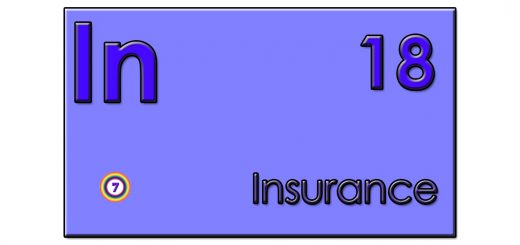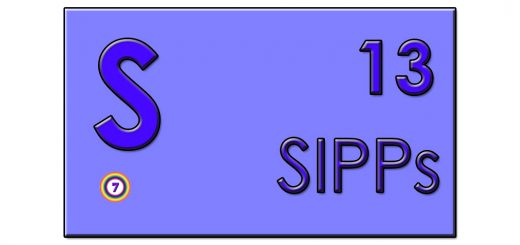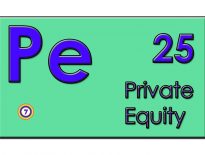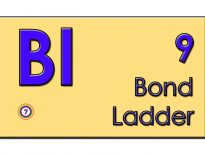Drawdown – Elements 17
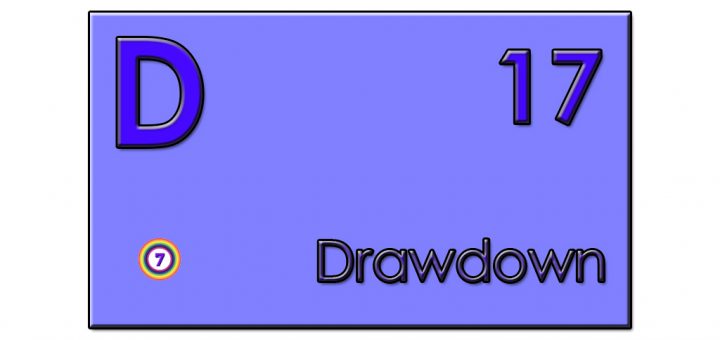
This post is part of the Elements series, a Periodic Table of all the Investing Elements that you need to take control of your financial life. You can find the rest of the posts here.
Pension Drawdown
What is it?
Drawdown is one of the two options for decumulation (taking your DC pension on retirement).
- Building up your pension is known as accumulation, hence the strange name for cashing it in.
- The other options is taking an annuity.
- This will be covered as a separate Element, but is not recommended.
Until the pension freedoms of 2015, taking an annuity was the default option, but now Drawdown will be better for most people.
Drawdown can be subdivided into three elements, which will be discussed below:
- The tax-free lump sum (which also applies to annuities)
- Taking a regular income
- UFPLS – lump sum withdrawals
The tax-free lump sum (officially known as the Pension Commencement Lump Sum, or PCLS) comprises 25% of your pension pot.
- You can take it in one lump, or gradually as part of UFPLS withdrawals.
The remaining 75% of your pension is taxable as income.
- You can draw a regular amount each month or year, or take irregular amounts.
- This is technically known as flexi-access Drawdown (FAD).
- Large withdrawals will result in a large tax bill.
An irregular amount taken as a lump before you draw any income is known as a UFPLS.
- This stands for Uncrystallised Funds Lump sum.
- The first 25% of your UFPLS comes from your tax-free lump sum (and is not taxed).
- The remain 75% is subject to income tax at your marginal rate.
You can read more about UFPLS here.
What kind of element is it?
Pension Drawdown is a product offered by some but not all personal pension providers.
- For example, NEST (the Government auto-enrolment workplace pension provider) does not provide (( More accurately, has not been allowed by the government to provide )) a decumulation solution (which would be a form of drawdown).
- Scheme members who want to access their pension will need to transfer some or part of their pot into a pension scheme which allows access to drawdown and or an annuity.
Most of the major SIPP providers (Hargreaves Lansdown, YouInvest, Fidelity) do provide drawdown.
Who needs it?
Everybody should have a pension, and will need to access it eventually.
- For most people, Drawdown will be the best way to access it.
For my generation, initially pensions were provided by the company you worked for, as “final salary” or DB pensions.
- DB pensions were gradually replaced by DC pensions, and for many people – especially freelancers and those working through service companies – SIPPs took the place of company pensions.
- Now with auto-enrolment we are coming full circle, and for people currently in their twenties the workplace pension should provide a significant sum in retirement.
But whether accessing a SIPP or a workplace DC pension, Drawdown will probably be the best route.
What comes before it?
The usual plans, budgets and paying off debts I will take for granted here.
The key item that comes before Drawdown is building up a pension in the first place.
- This seems trivial, but the average pension pot in the UK is only £35K.
- The most important thing is to remember to save throughout your working life.
What comes after it?
Nothing need come after it, assuming you build up a big enough pension pot to last you through your retirement.
- You could stick with Drawdown for as long as you live.
Alternatively, as you get older and your capacities diminish, you may feel more comfortable converting some or all of your pension pot into a regular guaranteed income.
- This means taking out an annuity.
- These are never good value, but their attraction increases as you age.
- When you have fewer years left to live, insurance companies can afford to pay you much more per year for your pot size.
The drawdown of this approach is that you would have no money left when you die to pass on to your relatives.
What age do you need it from?
At the moment you can start to Drawdown a pension from age 55.
Whether this is appropriate for you will depend on:
- the size of your pension pot (is it enough to live on for the rest of your life?)
- any other DB pensions you qualify for (usually at age 60)
- your other savings and investments
- your other income (75% of withdrawals are taxed as income)
- whether you enjoy working and want to continue to work
- whether you trust the government not to tinker with your access to your pension pot in the future
The government has announced proposals (but no timescale for their implementation) that access to private pensions should commence 10 years before State Pension Age (SPA).
- Since the SPA is already scheduled to rise to 67 by 2028, and probably to 70 in coming decades, it’s likely that access to Drawdown will rise to 57 and eventually to 60. (( Which coincidentally is the age at which early-withdrawal penalties are removed from the new LISA ))
What age do you need it until?
Until you die, or set up an alternative retirement income (eg. an annuity).
How much does it cost?
Each provider sets their own costs for Drawdown.
The simplest approach is that you are charged only for holding the investment portfolio that you draw money from, with no additional charges for the Drawdown overlay.
- For such an arrangement, you might expect to pay between 0.5% and 1% pa, depending on the platform and investments that you choose.
What’s in it?
In its simplest form, Drawdown is just a SIPP that money is being taken out of rather than added to.
- So you can keep whatever you have in your SIPP inside your Drawdown fund.
This will include stocks and bonds, perhaps cash, and maybe some diversifiers like property, private equity, commodities and infrastructure.
You can use active or passive funds to achieve your desired portfolio, and ETFs or OEICs as the funds.
- You can even hold things like individual bonds in your drawdown fund.
You have to decide whether the asset allocation that you had when you were building up your portfolio is still appropriate for you in retirement (decumulation).
What does a good one look like?
A good Drawdown scheme is based on a SIPP that you like and understand, and has no additional charges for the Drawdown overlay.
What does a bad one look like?
A bad Drawdown scheme imposes additional costs onto your underlying SIPP.
Any recommended brands?
I looked at Drawdown schemes here.
- Fidelity were the cheapest of my SIPP for drawdown using passive funds.
- Hargreaves Lansdown were cheapest for stocks, ETFs and investment trusts in drawdown.
I am currently only accessing my HL SIPP, and so far I have used the UFPLS route.
What are the main risks?
There are two main risks with Drawdown:
- that you haven’t saved enough money to begin with, and you run out
- turning this around, this means that your withdrawal rate is too big for your pot and your life expectancy
- you are unlucky with the sequence of returns that your investment portfolio enjoys
- the main worry is that returns are low (or negative) in the early years
- withdrawals when the markets are low would impact your long-term returns
How do you deal with these risks?
To avoid running out of money, you have two options:
- save more money in the first place
- see How much is enough?
- withdraw less money each year
To cope with sequencing risk, the best approach is to keep a cash buffer of several years of expenses so that you don’t have to sell assets at low prices.
- For more detail, see Who’s afraid of sequencing risk?
Until next time.

